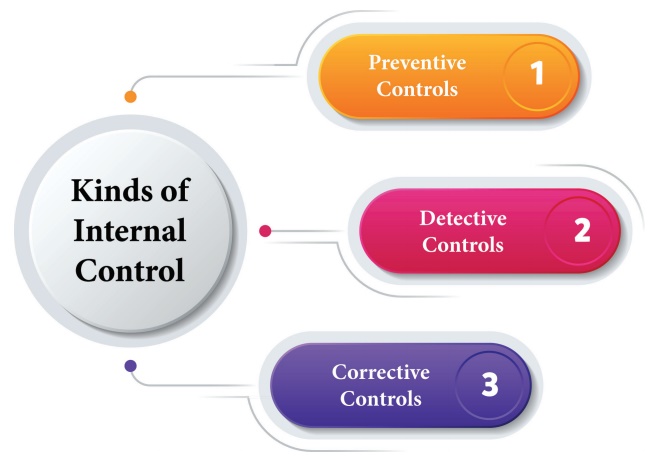Auditing - Kinds of Internal Control | 12th Auditing : Chapter 2 : Internal Control
Chapter: 12th Auditing : Chapter 2 : Internal Control
Kinds of Internal Control
Kinds of Internal Control

The type
of internal control system to be employed in an organization depends upon the
requirements and nature of the business. Generally, there are three types of
Internal Control in an organisation preventive control, detective control and
corrective control. These types of controls are essential for an effective
internal control system. From a quality standpoint, preventive controls are
essential because they are proactive and emphasize quality. However, detective
controls play a critical role by providing evidence that the preventive
controls are functioning as intended.
1. Preventive Controls: Preventive
controls are designed to discourage
errors or irregularities from occurring. They are proactive controls that help
to ensure departmental objectives are being met. Examples of preventive
controls are:
·
Segregation
of Duties: Duties are segregated
among different people to reduce the risk of error or inappropriate action.
Normally, responsibilities for authorizing transactions (approval), recording
transactions (accounting) and handling the related asset (custody) are divided.
·
Approvals,
Authorizations, and Verifications: Management authorizes employees to perform certain
activities and to execute certain transactions within limited parameters. In
addition, management specifies those activities or transactions that need
supervisory approval before they are performed or executed by employees. A
supervisor’s approval (manual or electronic) implies that he or she has
verified and validated that the activity or transaction conforms to established
policies and procedures.
·
Security
of Assets (Preventive and Detective): Access to equipment, inventories, securities, cash and
other assets is restricted; assets are periodically counted and compared to
amounts shown on control records.
2. Detective Controls: They are
designed to find errors or irregularities
after they have occurred. Examples of detective controls are:

·
Reviews
of Performance: Management compares
information about current performance to budgets, forecasts, prior periods, or
other benchmarks to measure the extent to which goals and objectives are being
achieved and to identify unexpected results or unusual conditions that require
follow-up.
·
Reconciliations:
An employee relates
different sets of data to one another, identifies and investigates differences,
and takes corrective action, when necessary.
·
Physical Inventories
·
Audits
3. Corrective Controls: Corrective controls target at the correction of
errors and irregularities as soon as they are detected.
Related Topics